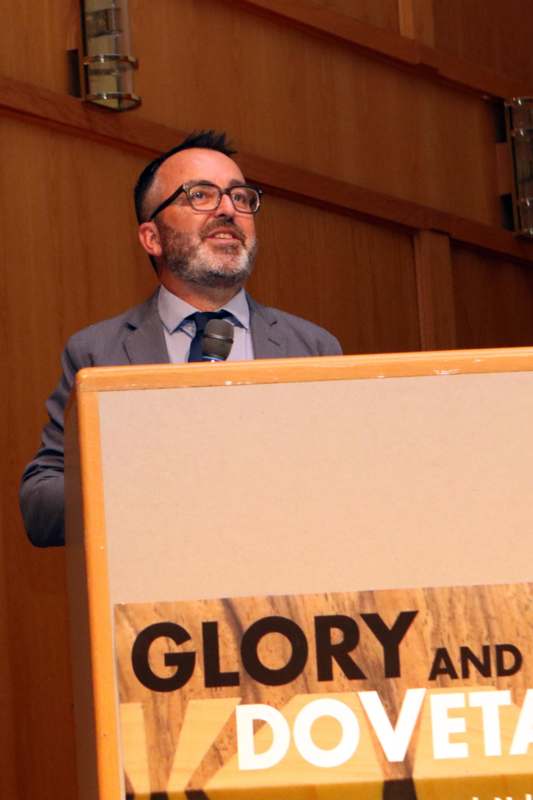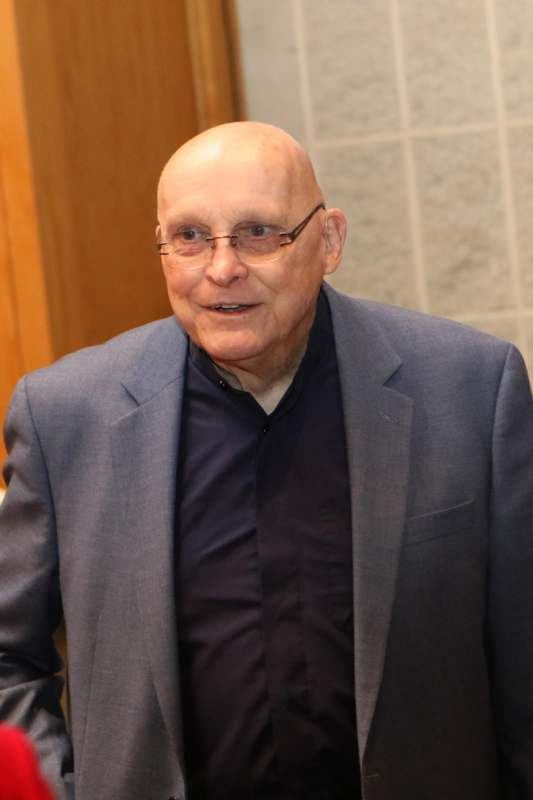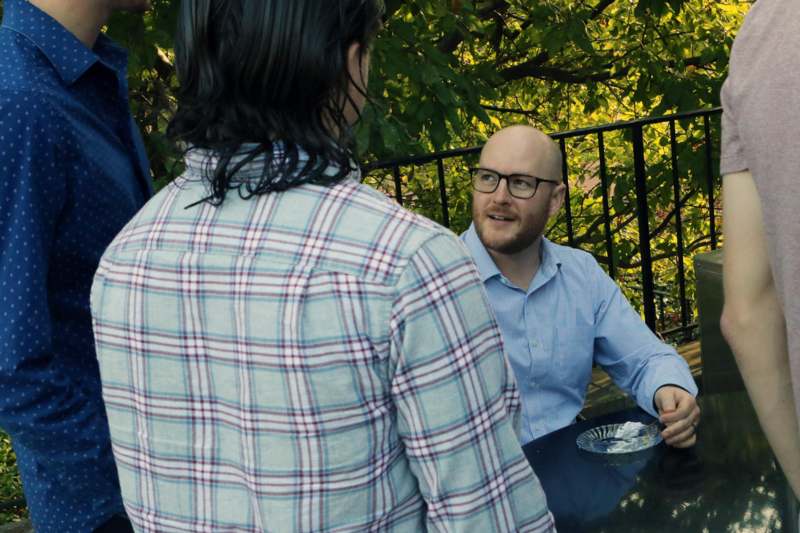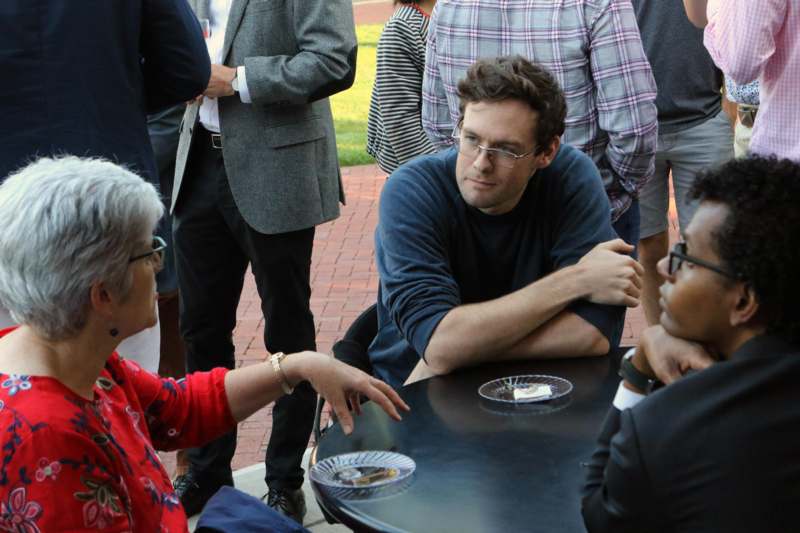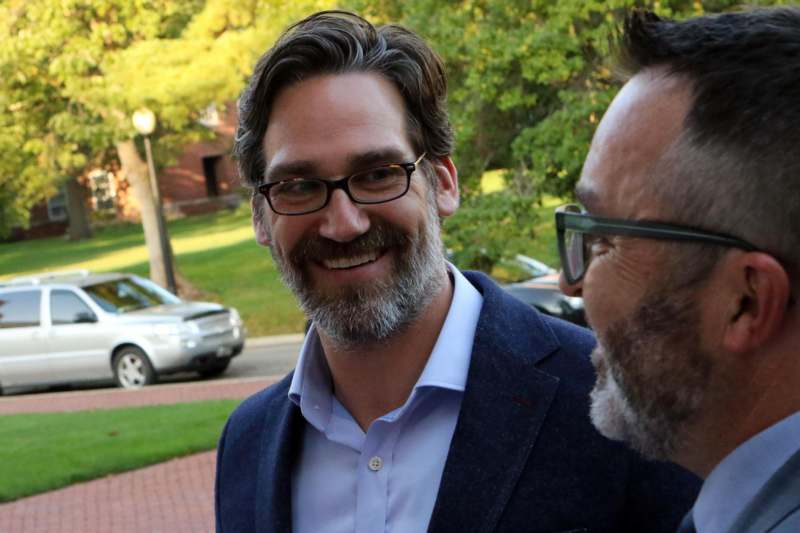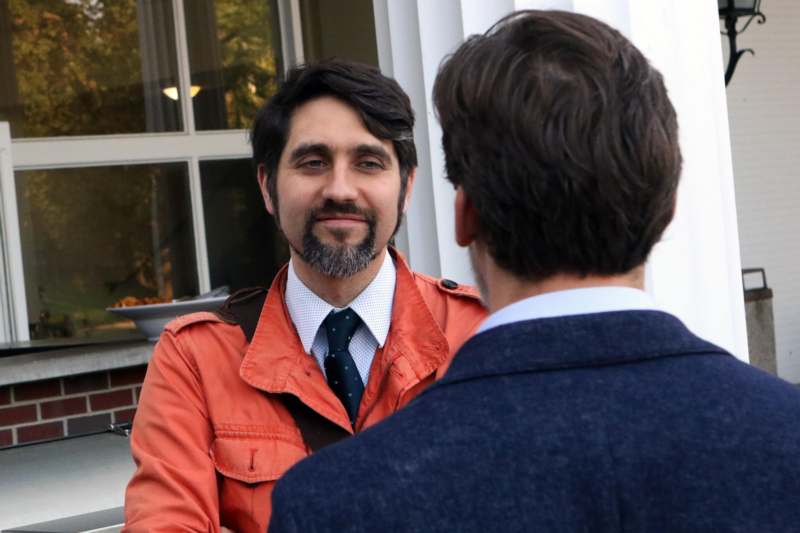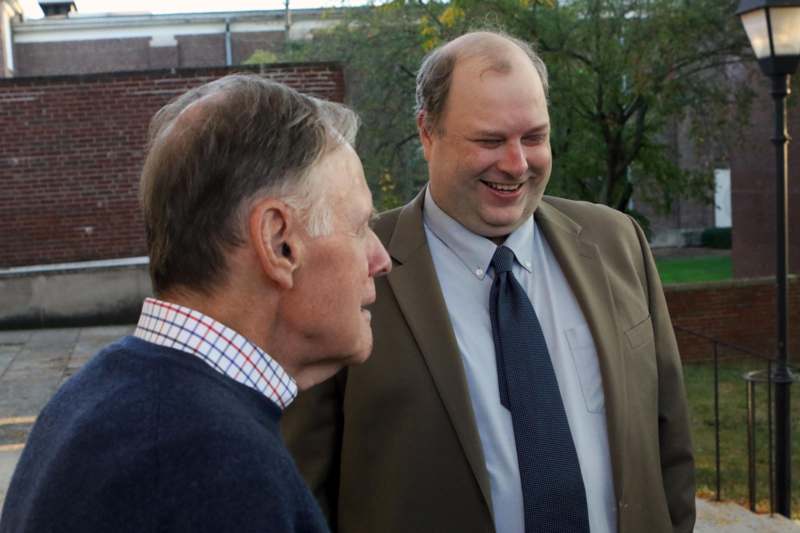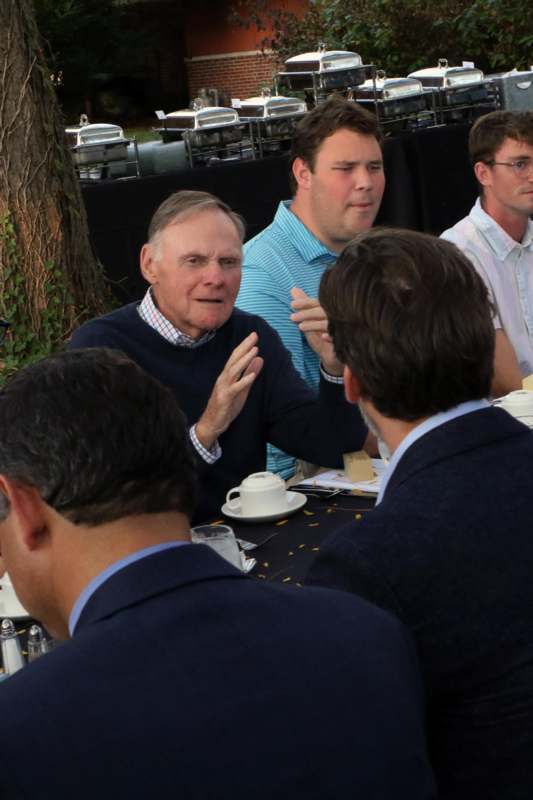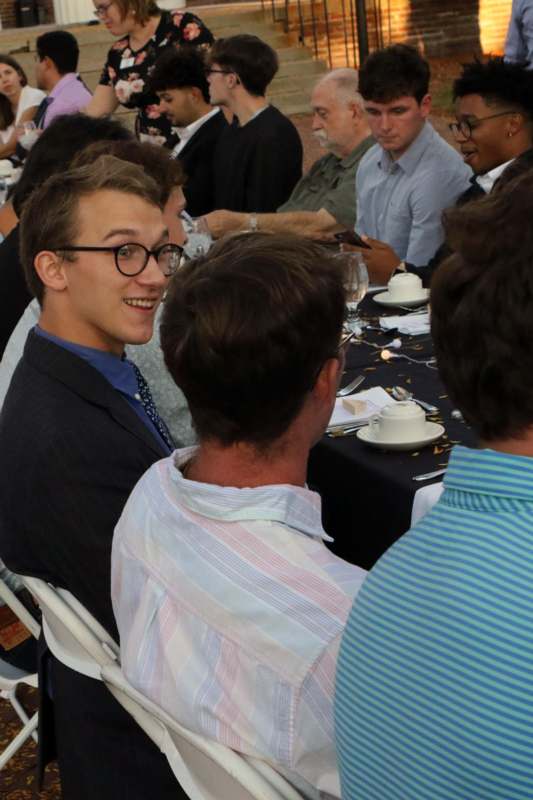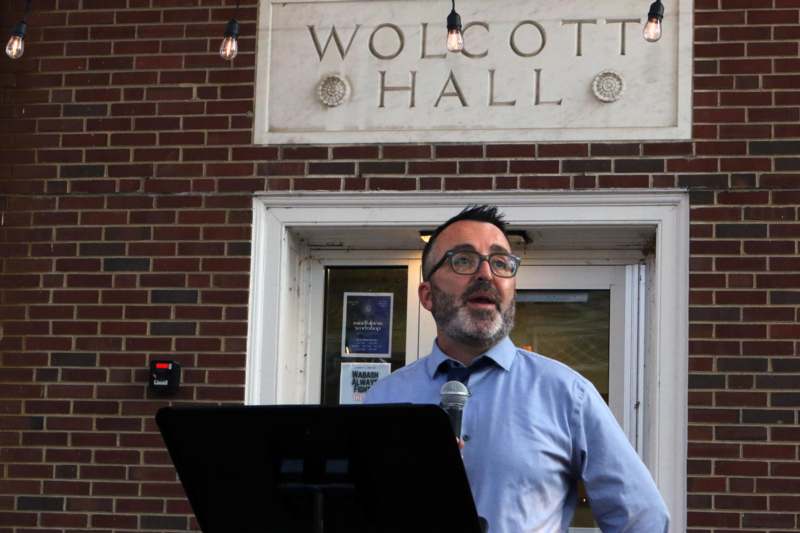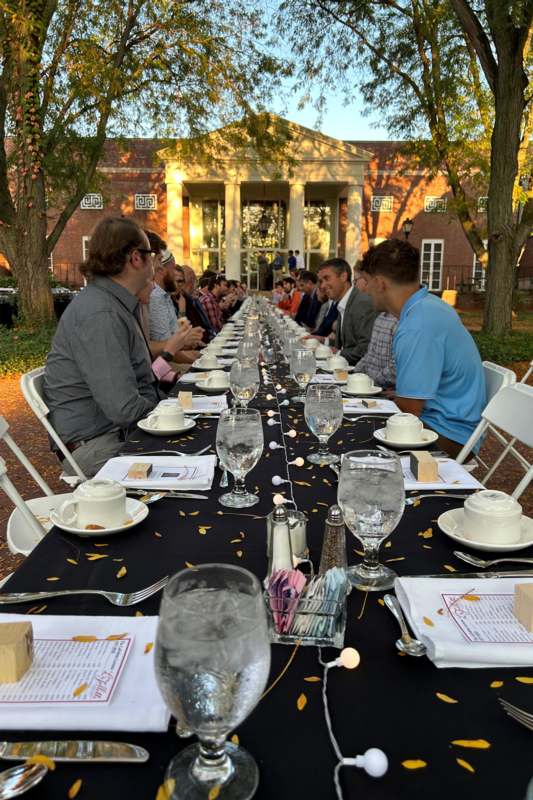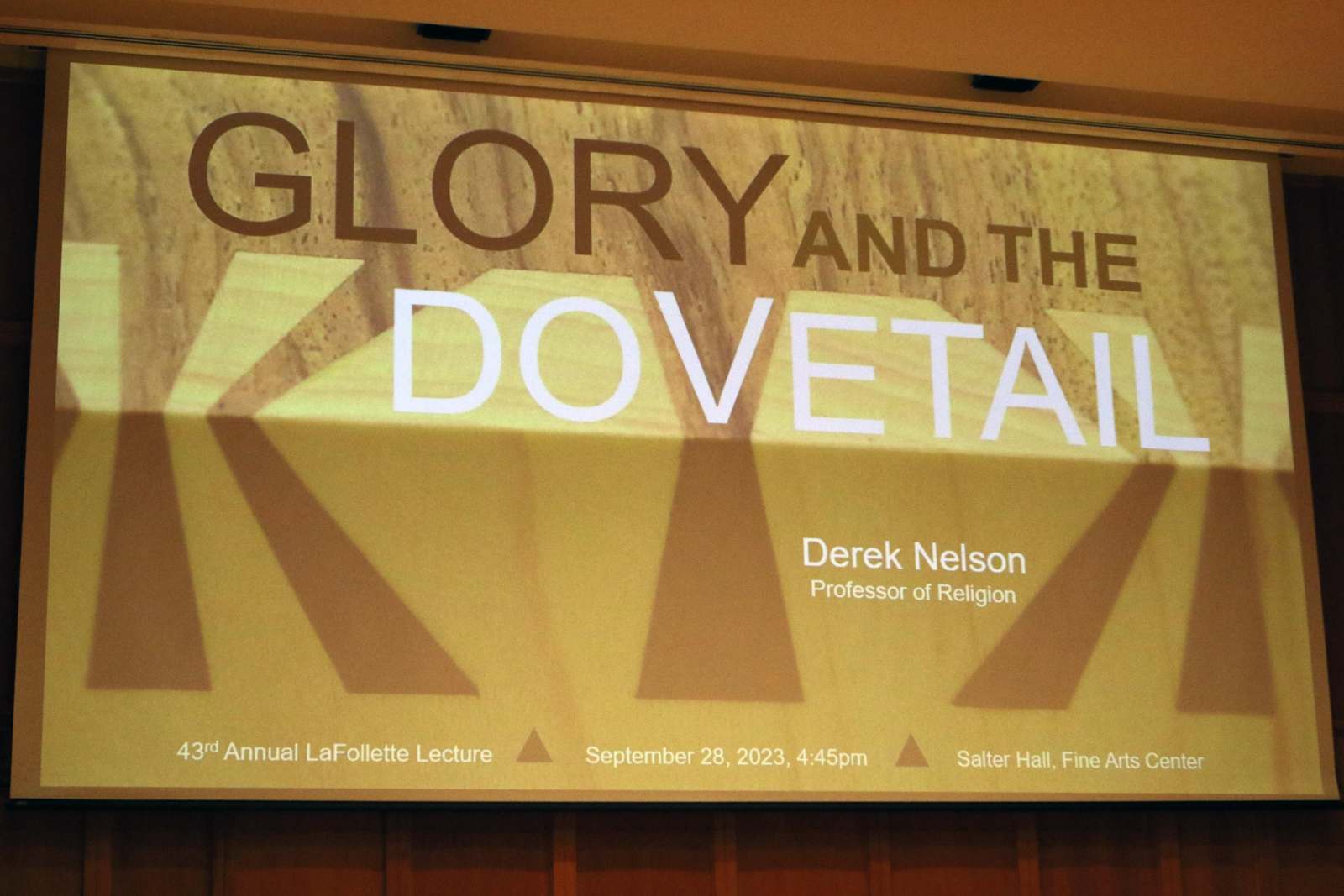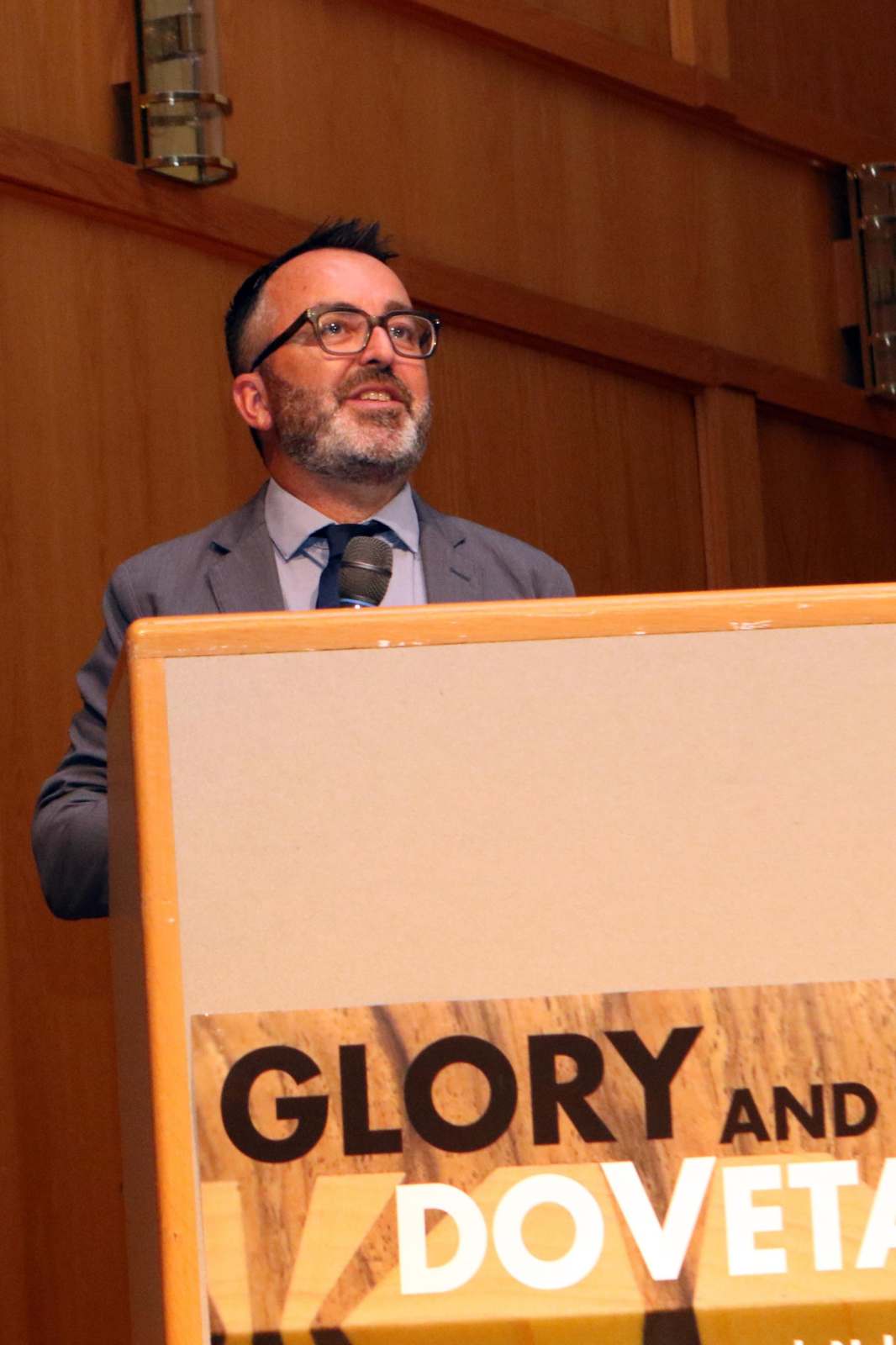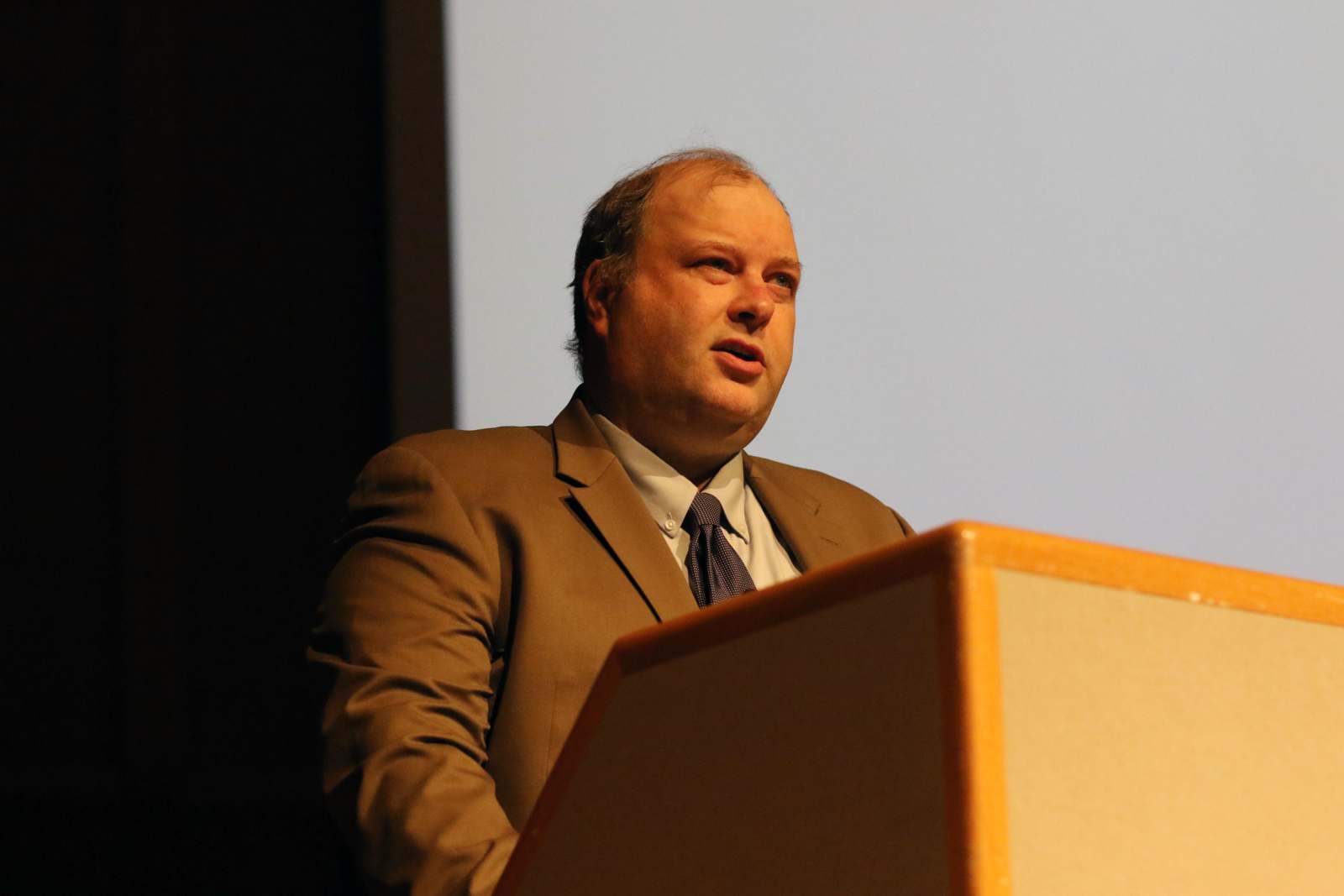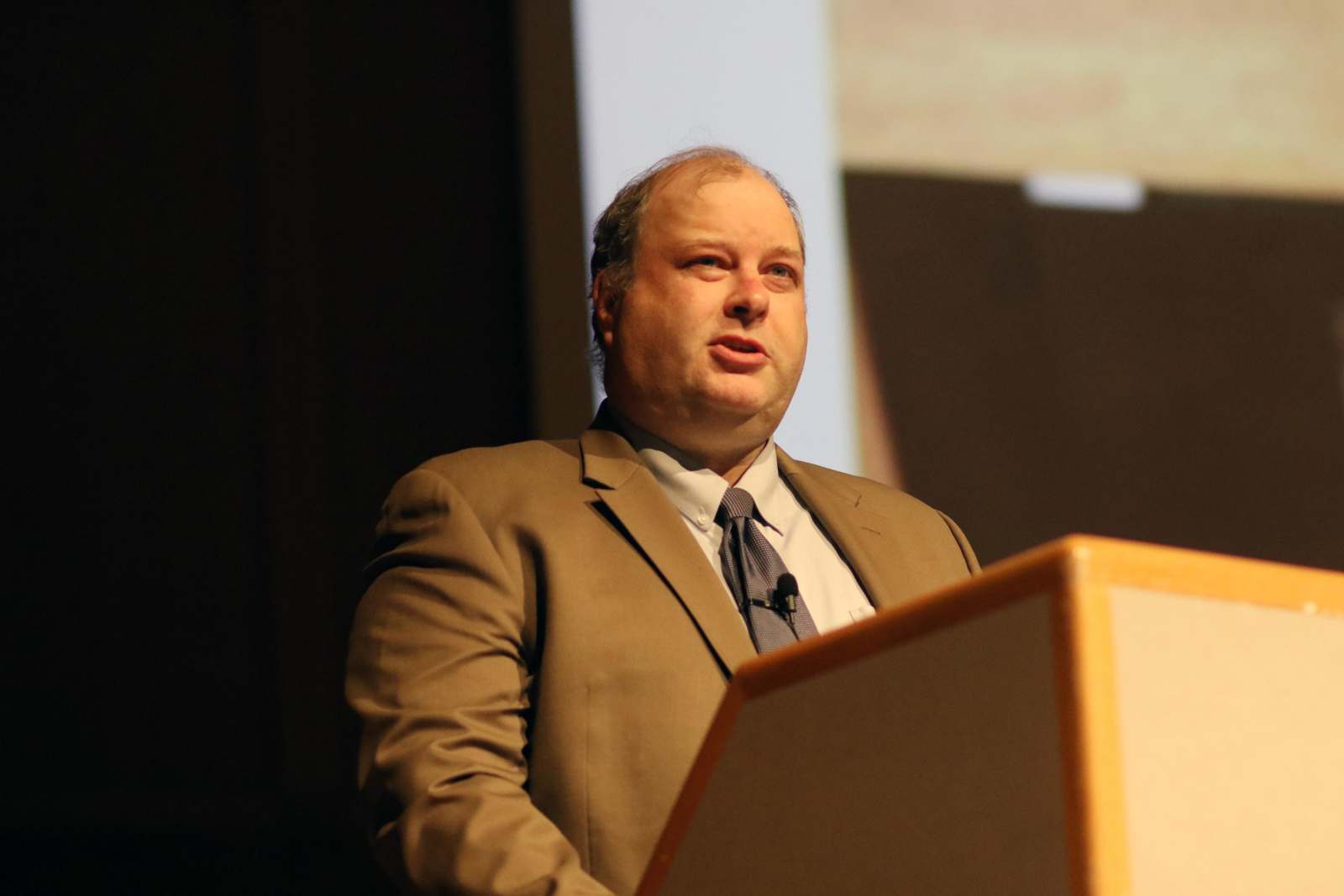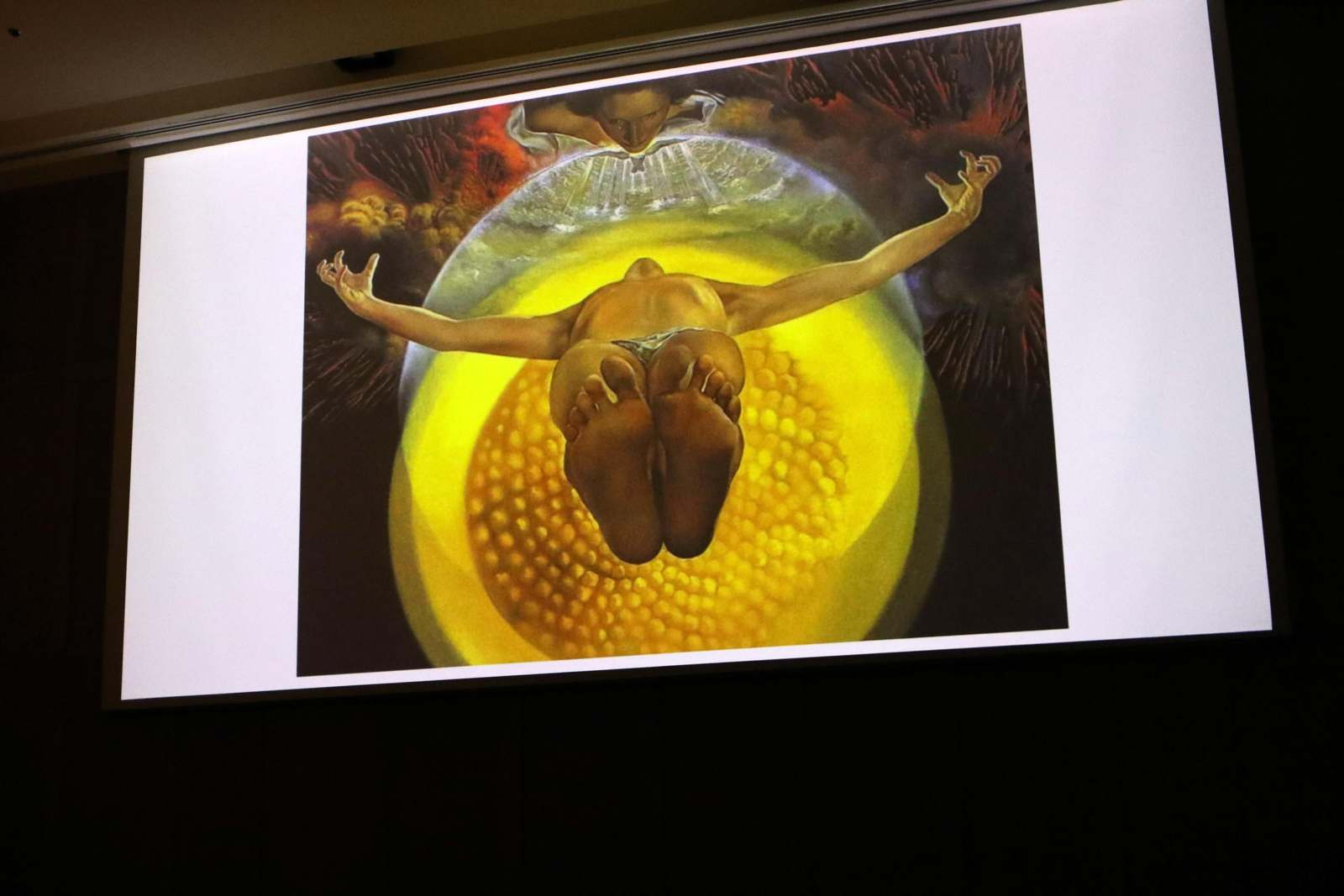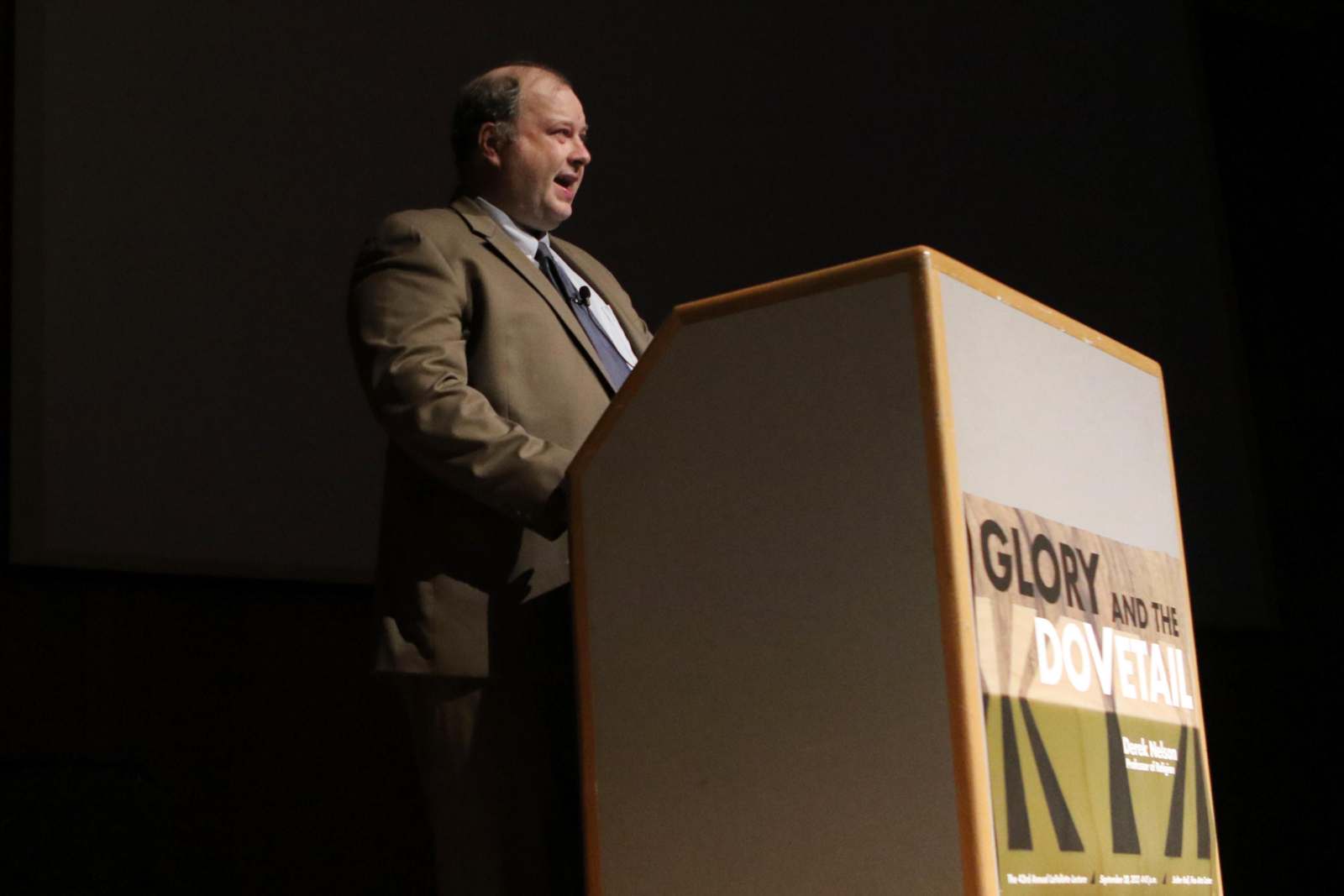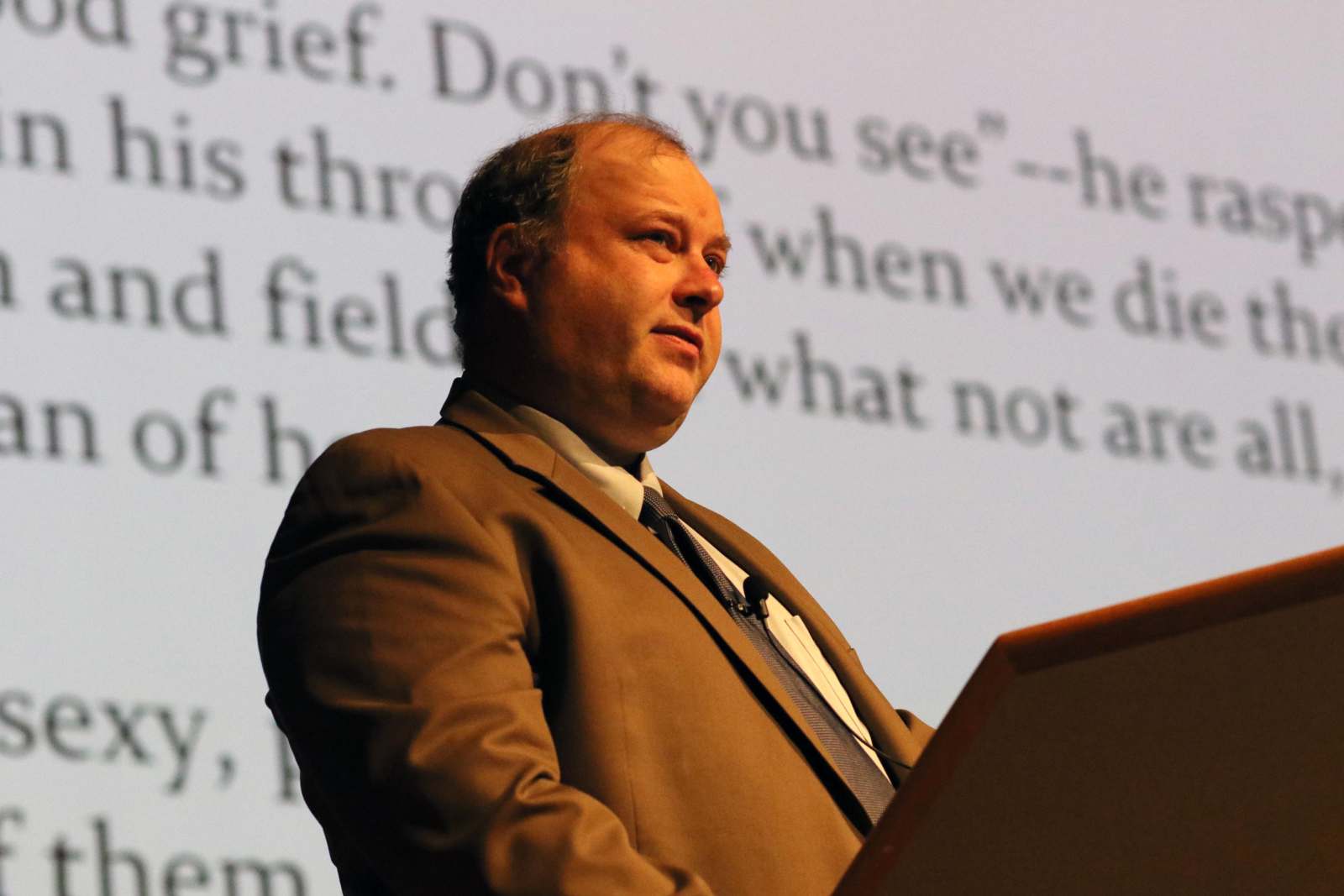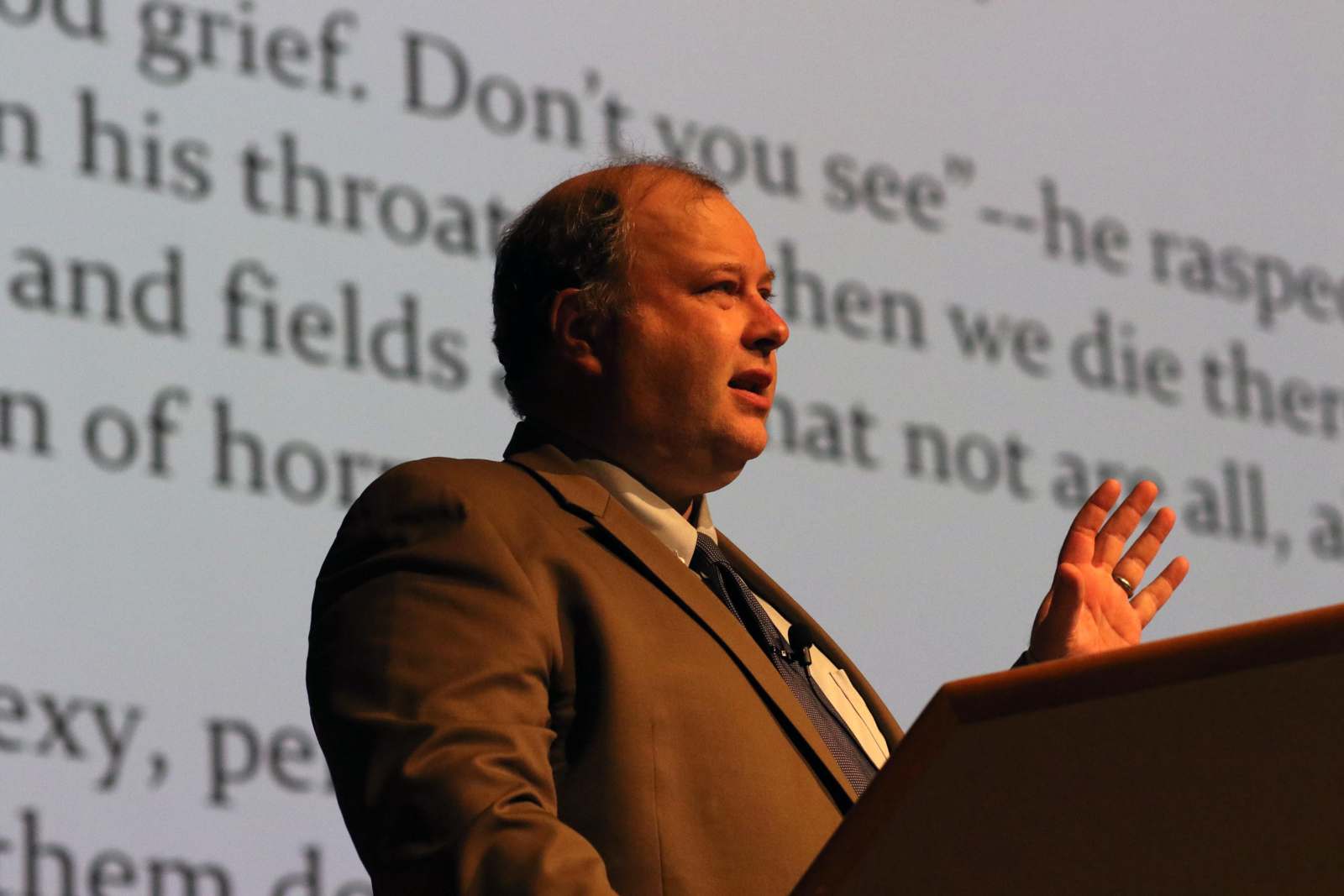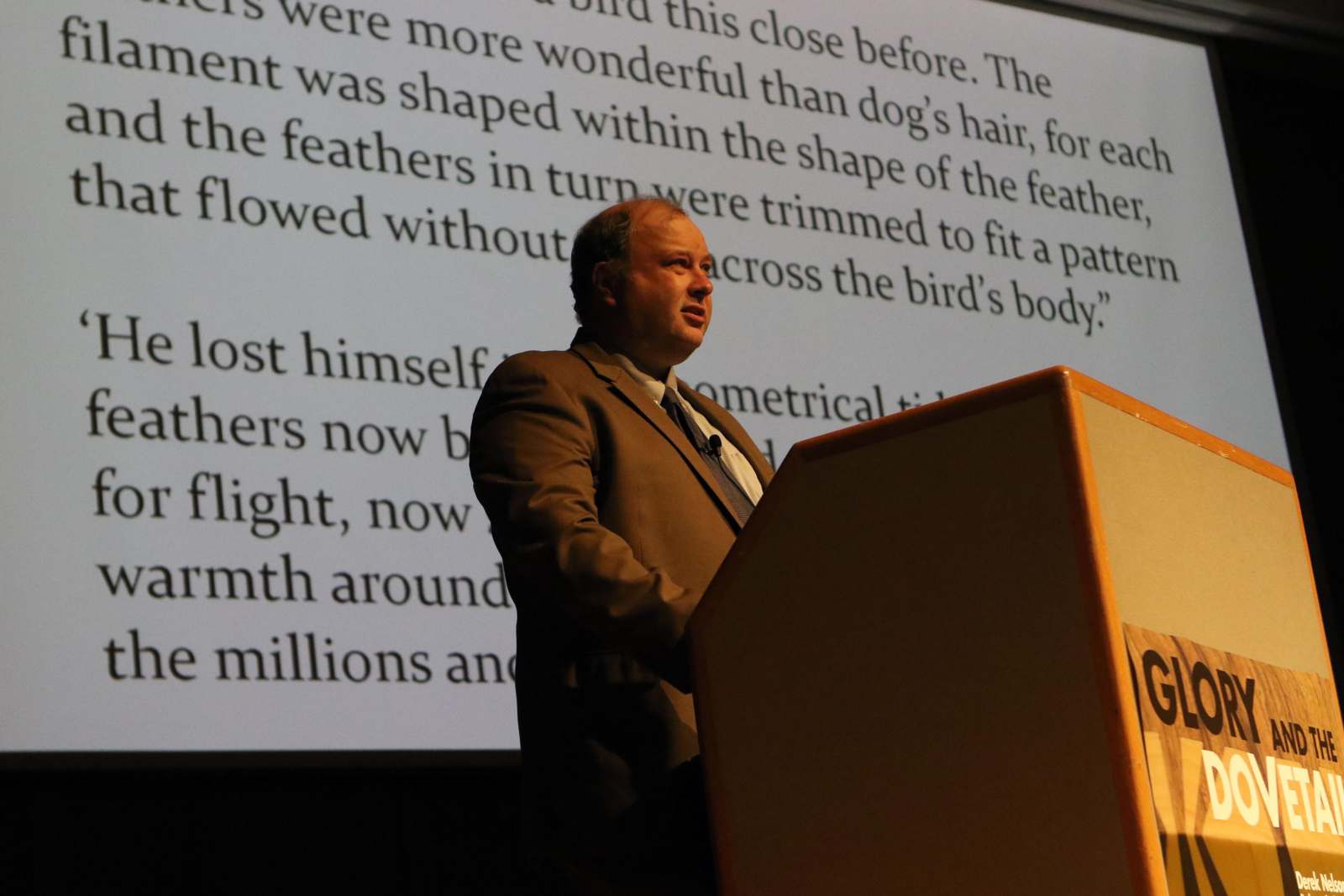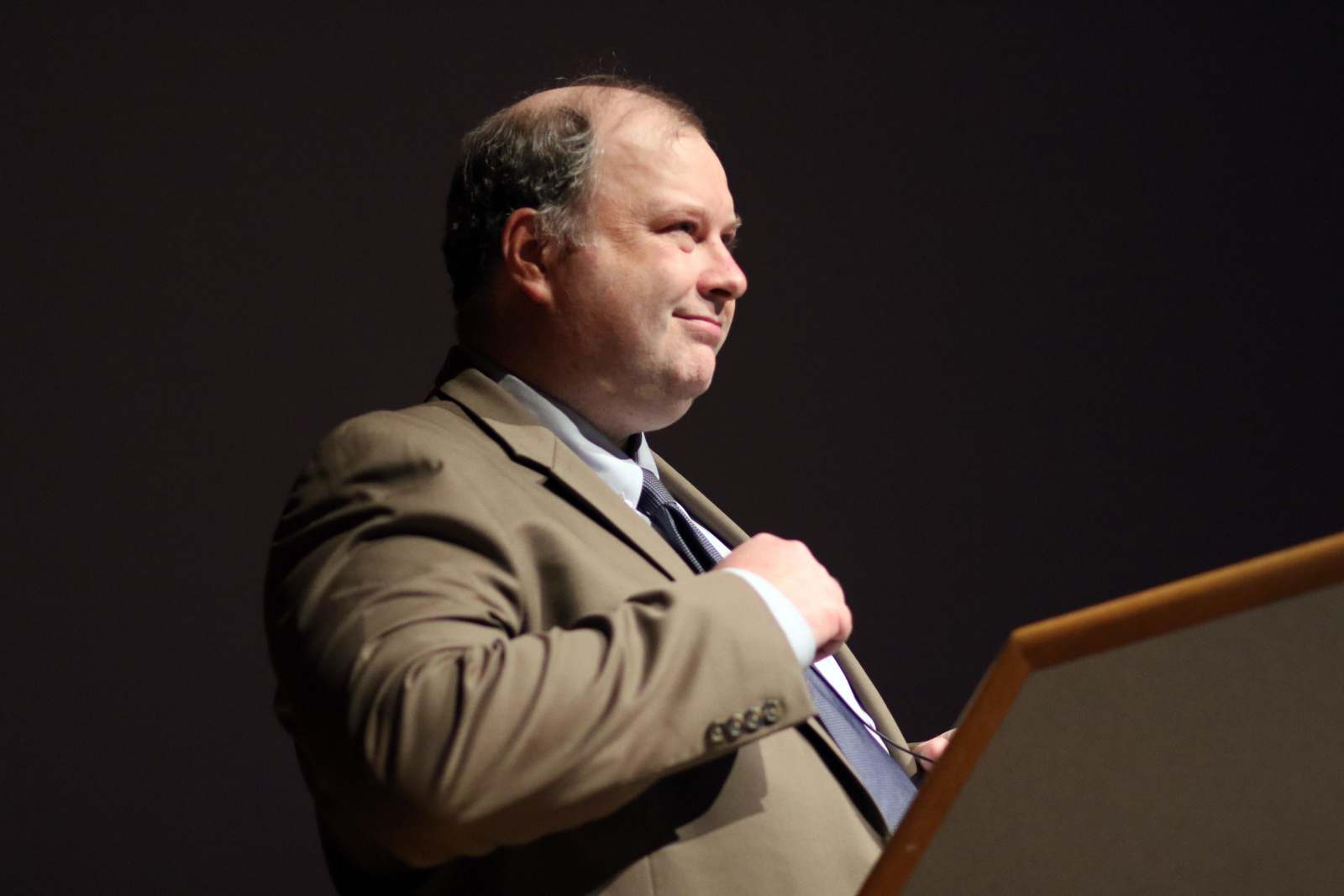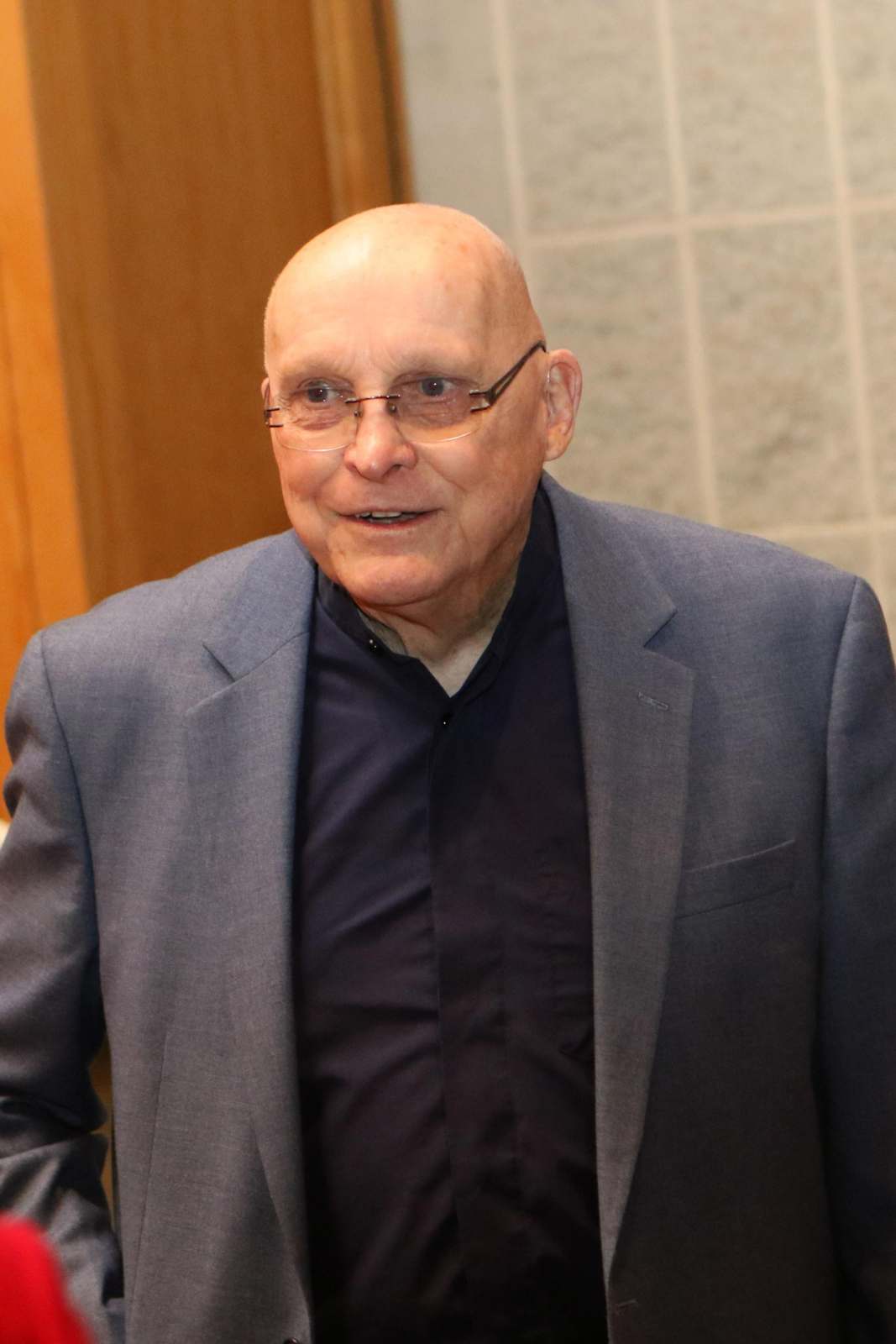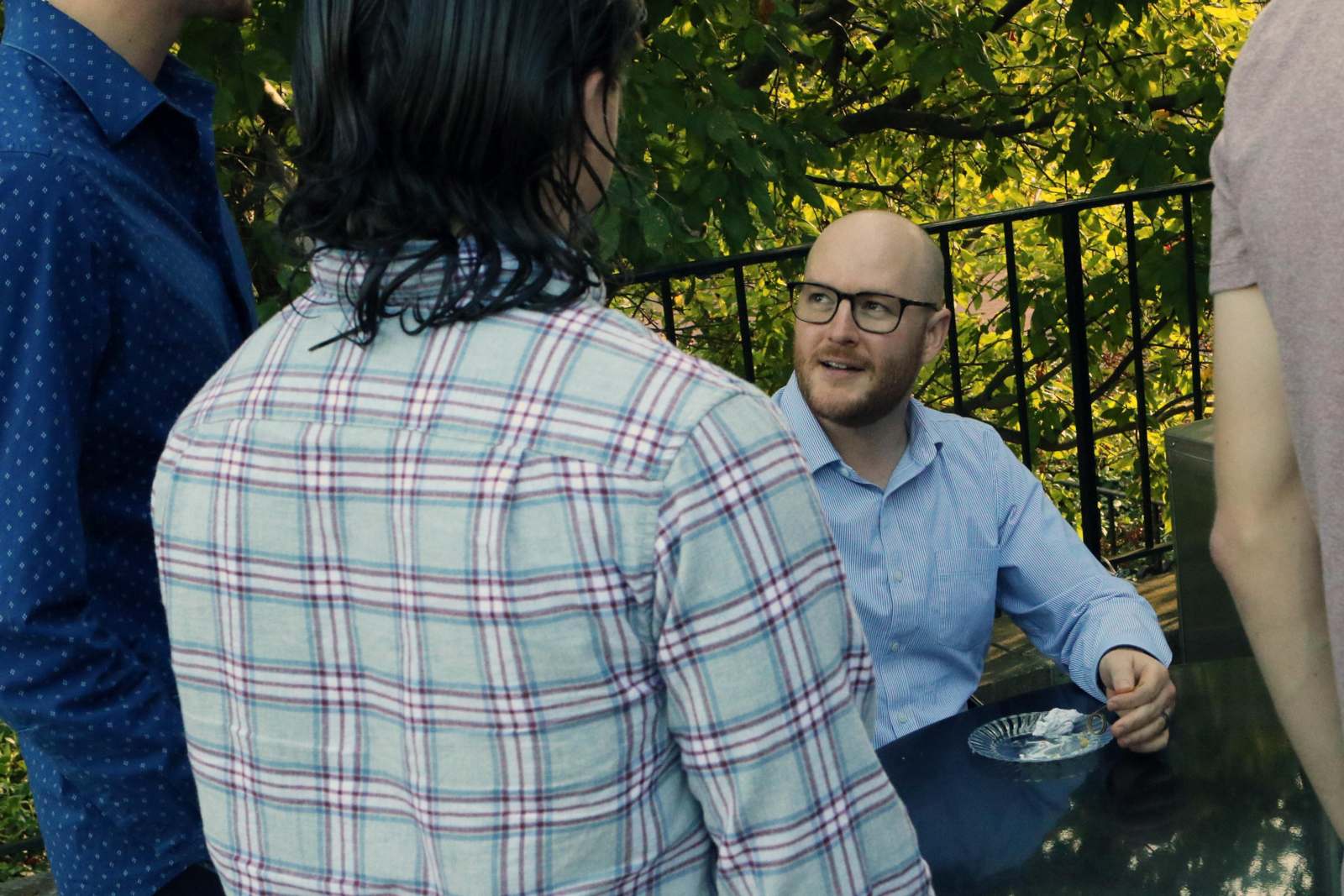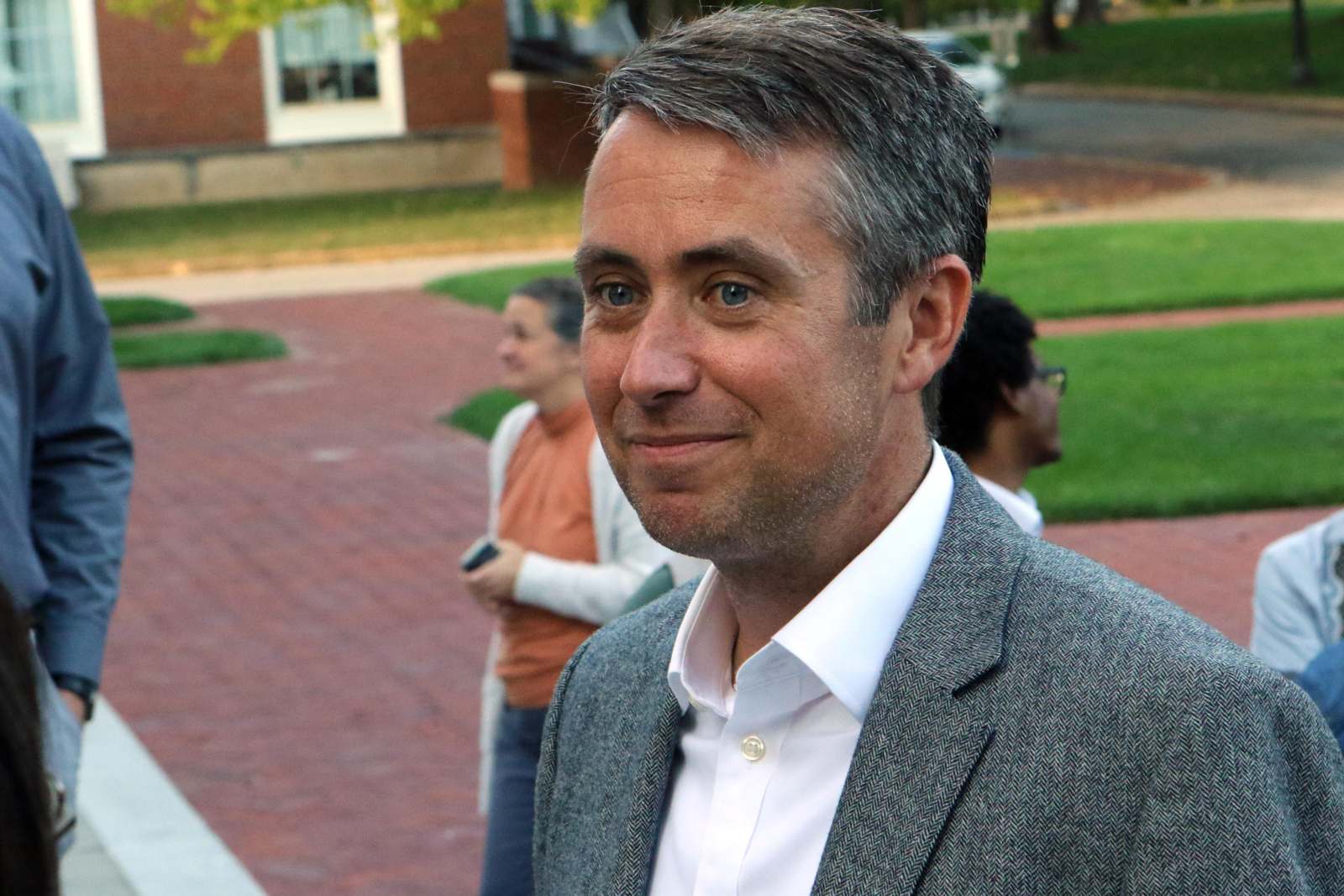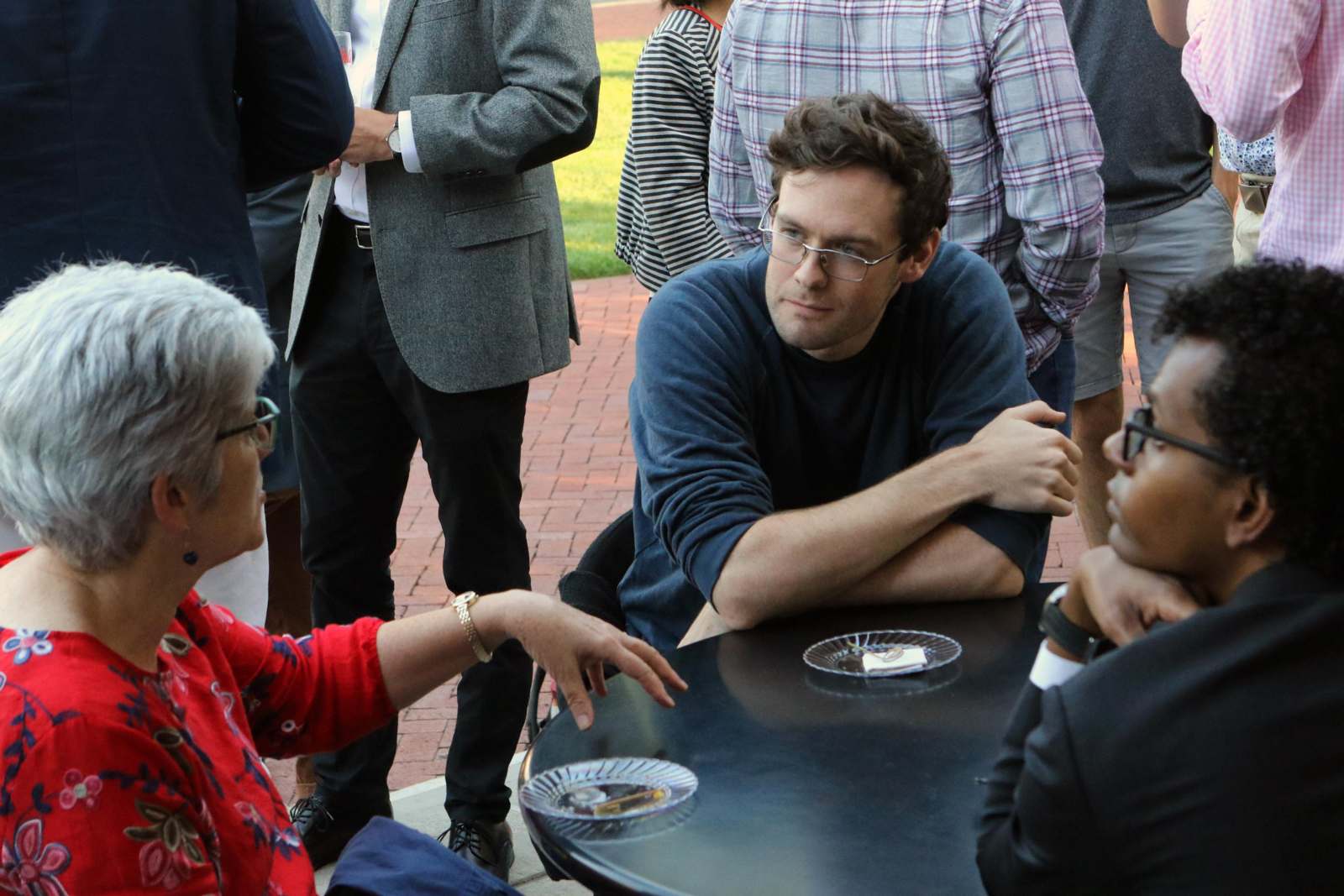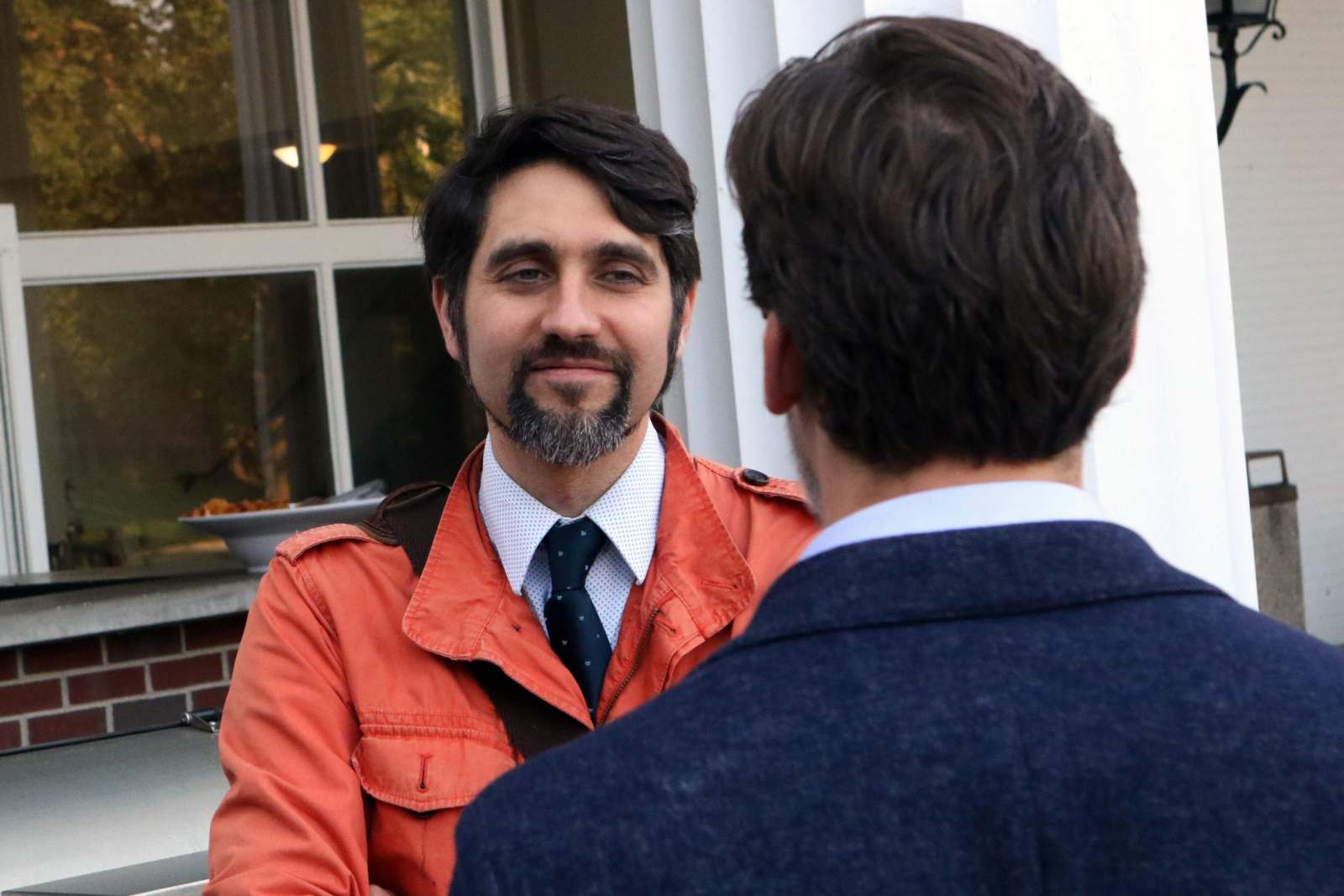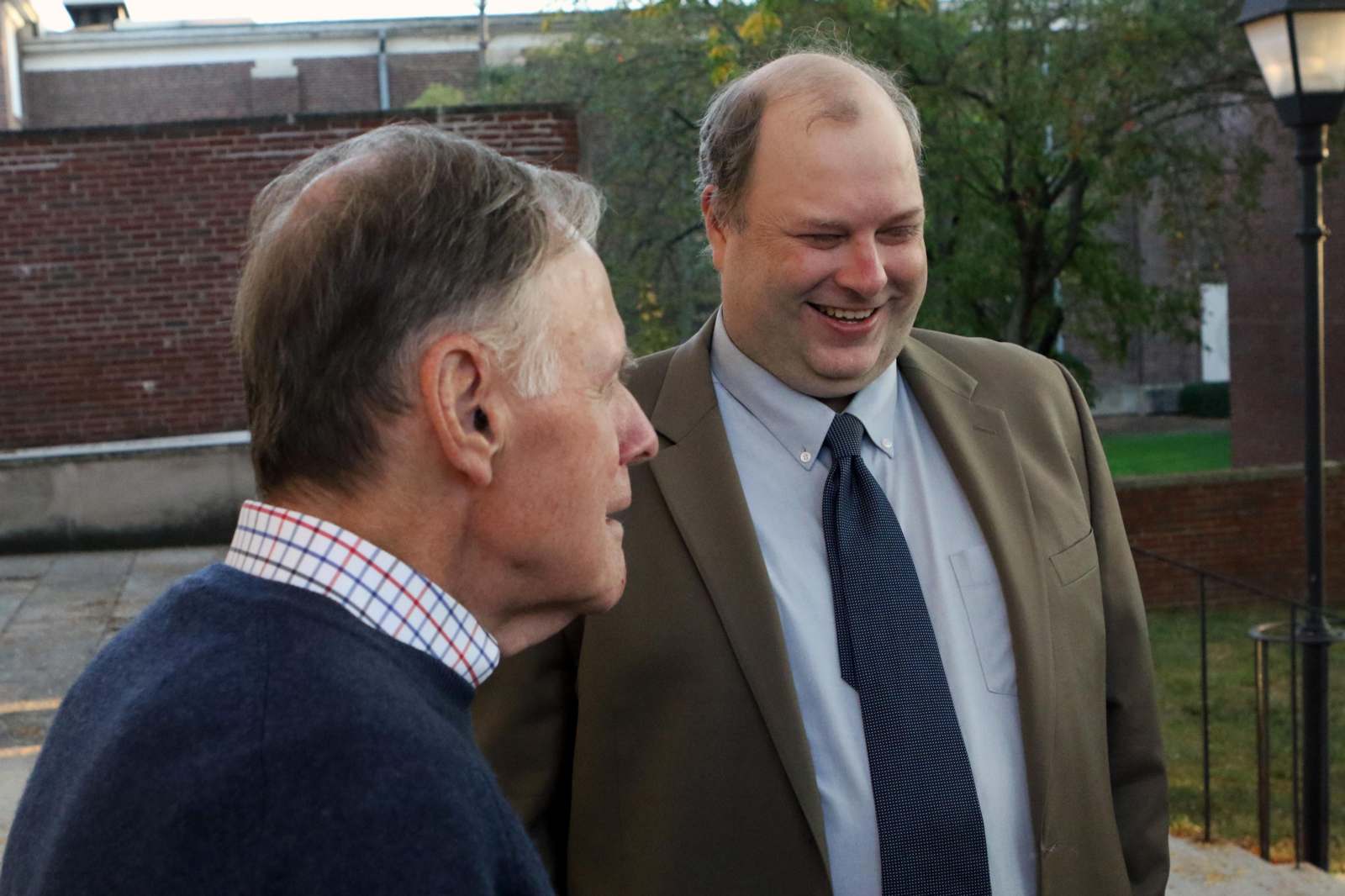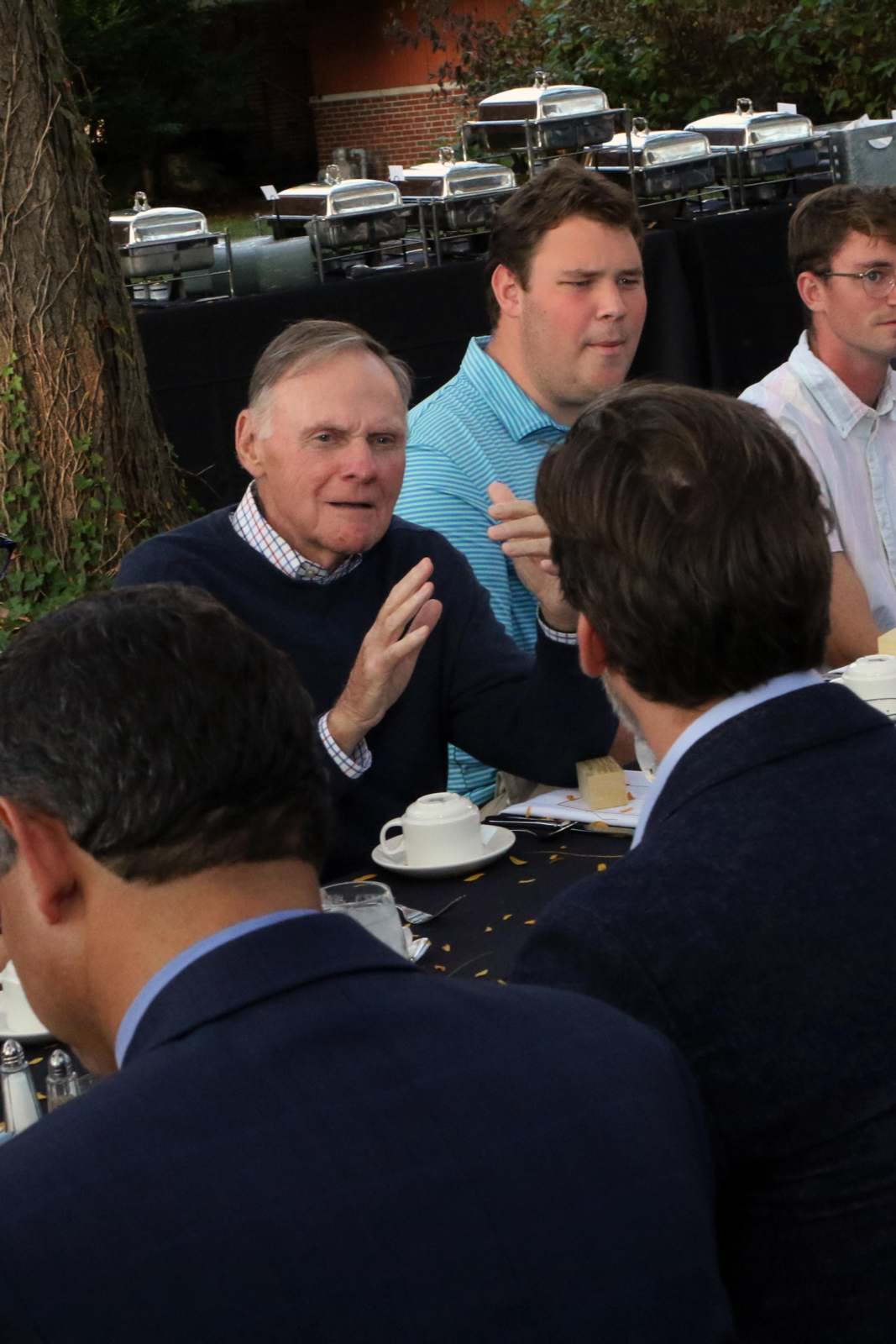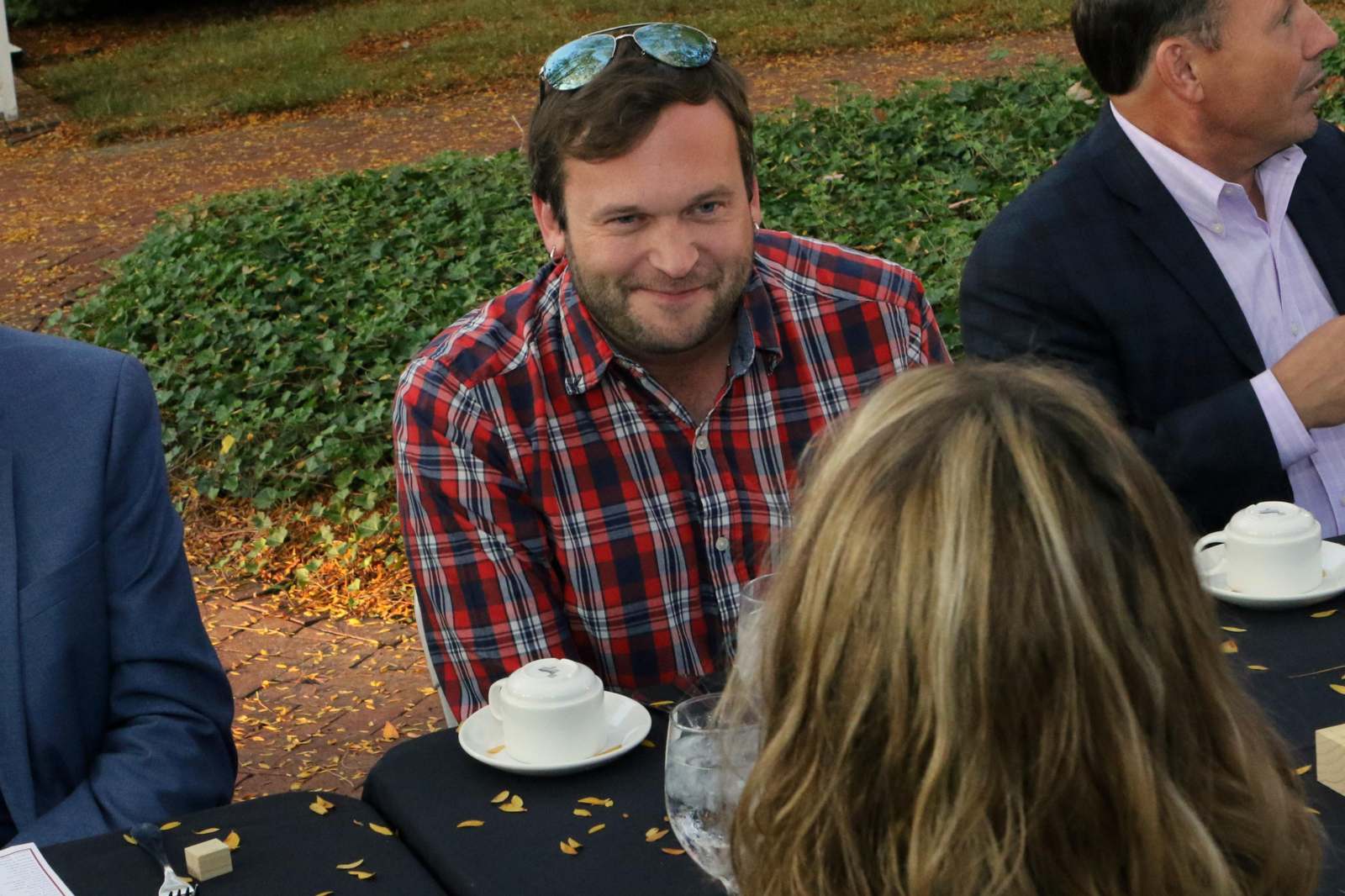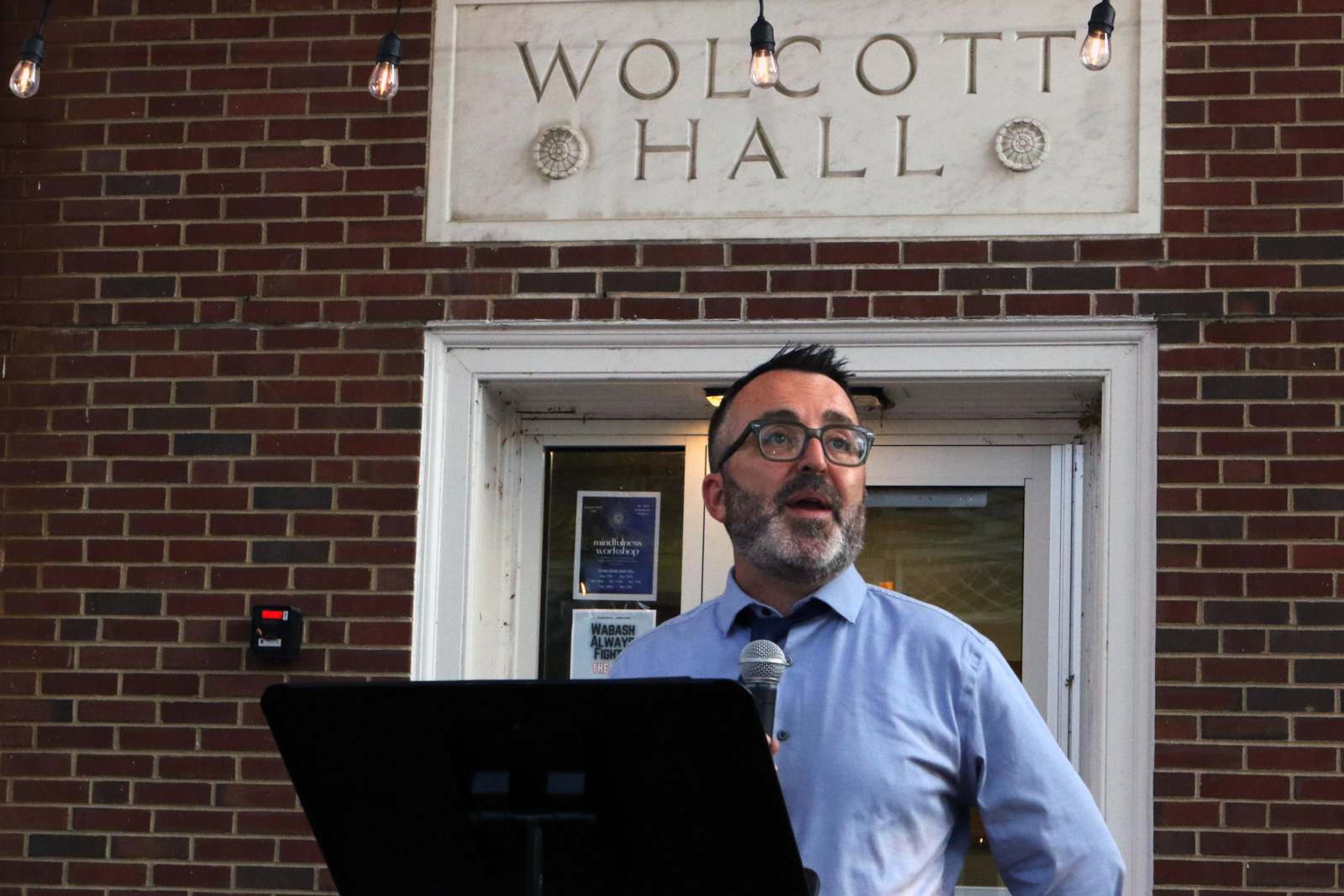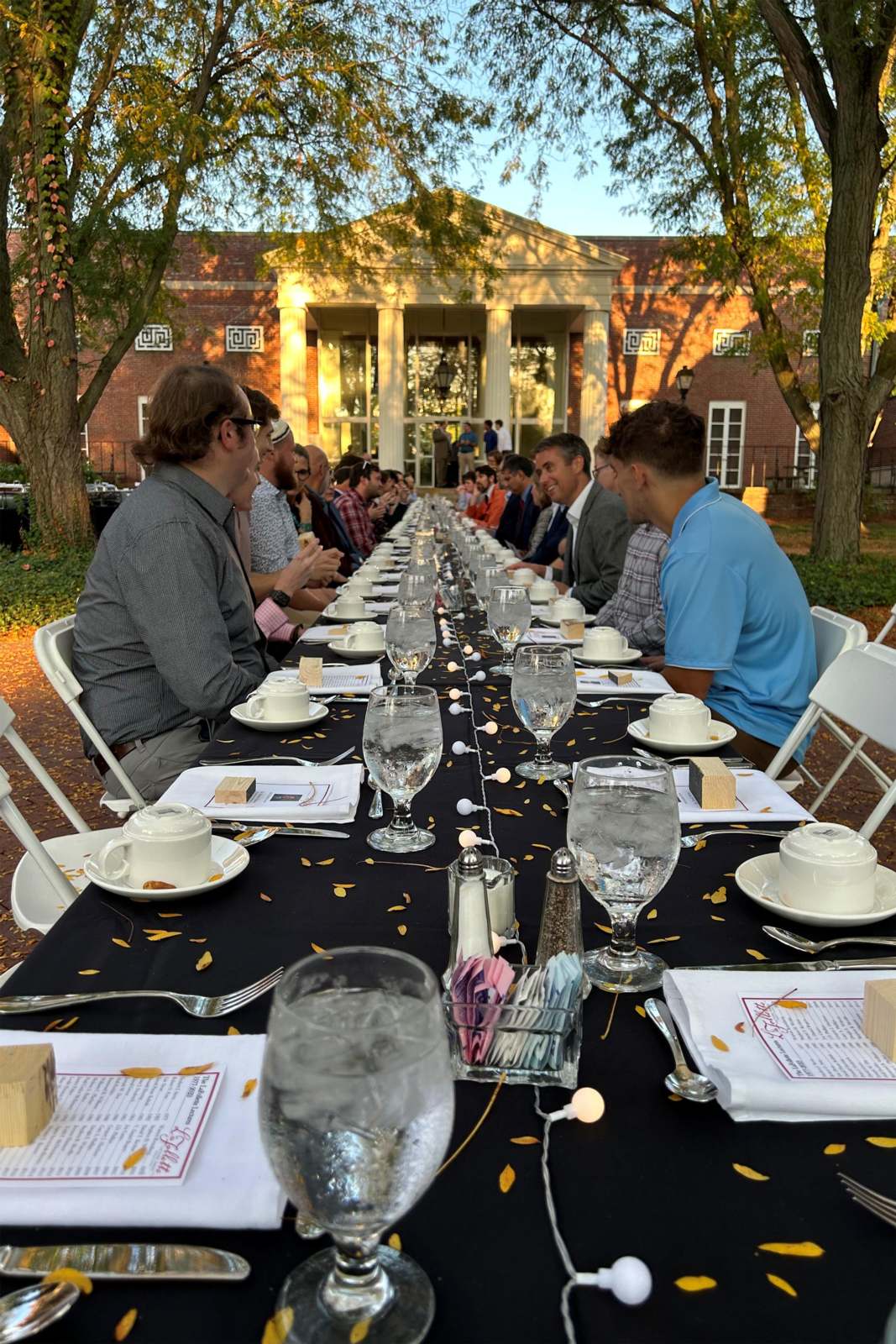43rd LaFollette Lecture: Derek Nelson '99
The LaFollette Lecture series was established in 1982 by the Wabash College Board of Trustees to honor Charles D. LaFollette, their longtime colleague on the Board. The lecture is usually given annually by a Wabash College faculty member who is asked to address the relation of their special discipline to the humanities, broadly conceived. This year's lecture, “Glory and the Dovetail,” was delived by Derek Nelson '99, Professor of Religion. Presented with the accompanying photos are excerpts from his lecture.

Derek Nelson is a theologian who teaches in the areas of ethics and the history of Christian thought. He is the author or editor of a dozen books, including “The Oxford Research Encyclopedia of Martin Luther.” This multi-volume work is the state-of-the-field resource, the product of a cooperative effort from 122 scholars across the world. His intellectual biography of Martin Luther, co-written with his deceased mentor Timothy F. Lull, is “Resilient Reformer: The Life and Thought of Martin Luther.” Current research projects: in systematic theology, an interpretation of the contemporary experience of and estrangement from materiality, especially as it relates to consumption and the making of a “home”; in practical theology, a book about what we are learning about pastoral leadership in a post-Christendom world; and in history, an examination based on primary sources of how the Ottoman Empire understood the Protestant Reformation as a social and intellectual event in the culture of their enemy and a look at what happened to the vow of poverty during and after the Reformation.
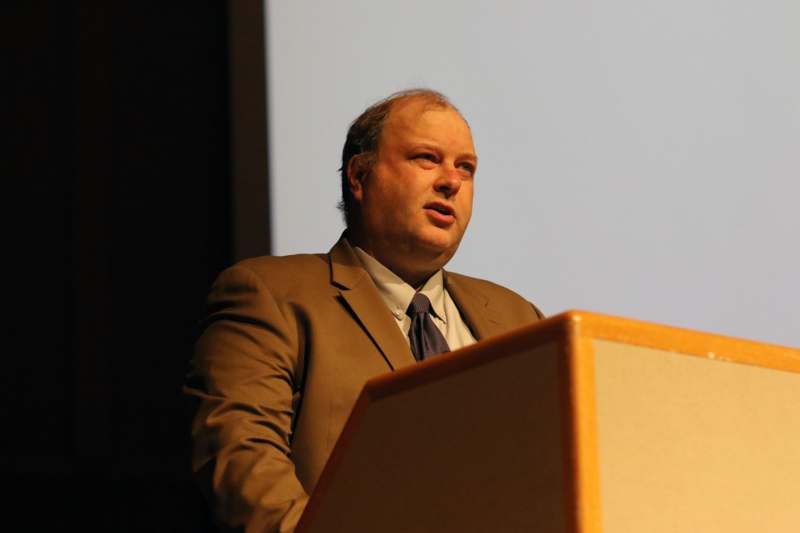
"We start in the physical, material world of everyday things and move from there," he began. "This lecture is called Glory and the Dovetail, but there’s only glory in the middle, whereas there will be three senses in which we’re looking at dovetails ... Part of the point I want to make is that grand theories with stable categories are part of the problem, and relying on sense experience of basic objects is a better way to proceed."
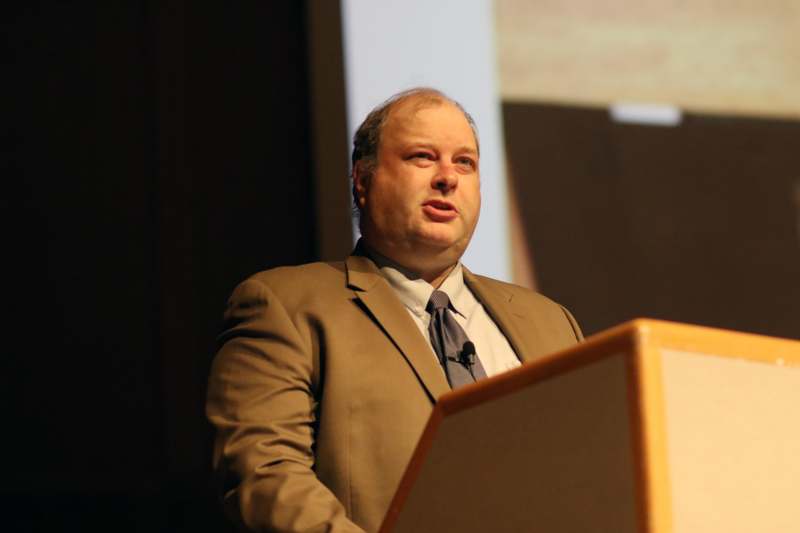
"Focusing in on the everyday stuff of life like dovetails helps me ponder deeper things in theology," he said. "For example, we can learn about freedom from the dovetail ... The pin can only slide in or out. The tail is captive. It has only one degree of freedom. Strength is purchased at the expense of some freedom. You don’t need treatises on the social contract by Locke or Rousseau to understand that point. You just need to look at the dovetail."
"A dovetail is lovely example of the presence of wood in one workpiece fitting the absence of wood in its mating piece. A wood joint is a dialectic of presence and absence. And something like this, I want to suggest, is a model for how to think about the continued presence of God in the material world of our experience after the ascension of Jesus."
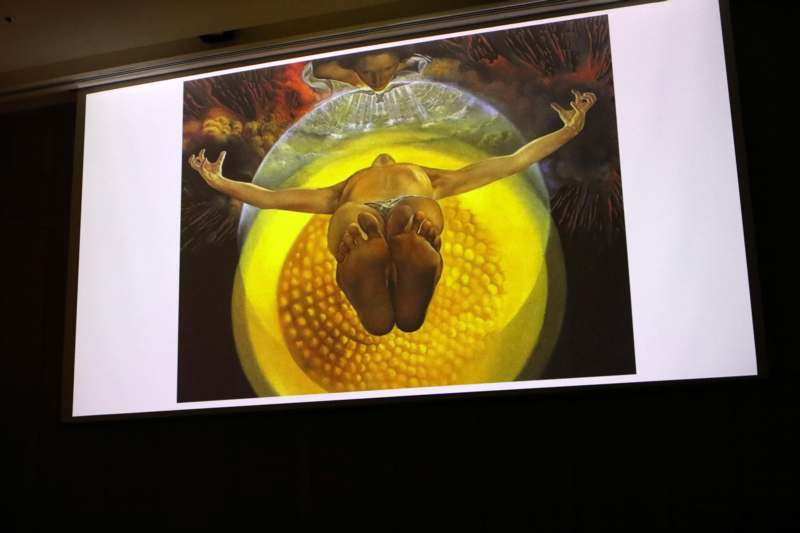
This painting by Slavador Dali made a visual point. "Perhaps my favorite image is Salvador Dali’s painting of the Ascension," he said. "Right there at the focal point of where the Ascending Christ is looking is a dove. Above the dove a face weeps. It might be an angel, it might be the one Jesus called his father. It looks like Dali’s wife Gala, though. And the face is crying. Grieving. Grief is as good a segue as any into how I want to think about the presence of God in the material world, and what I think Glory is all about."
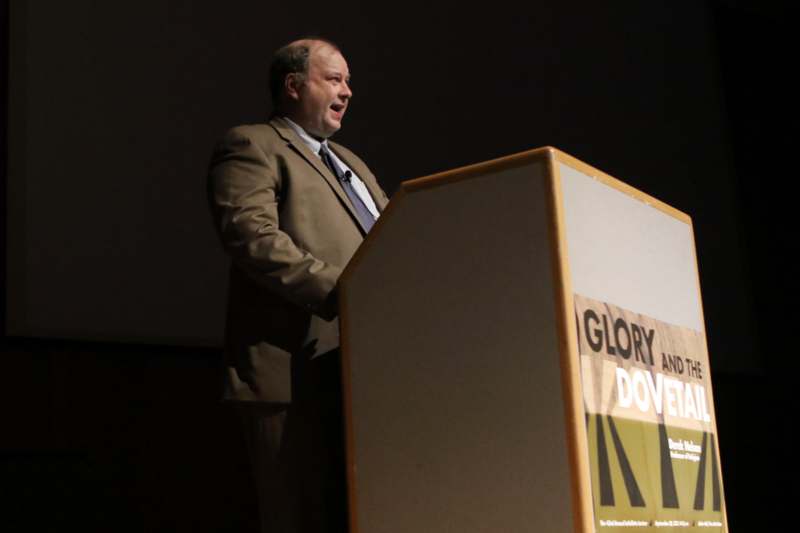
"I see Jesus as the glory of God," he said. "And that introduces our second key term today. “Glory” is how translators render the multi-faceted Greek term “doxa.” First some basics. If you were to simply look up the term in a dictionary of ancient Greek words you’d learn that doxa had to do with appearances. In rhetoric, doxa means opinion or estimation, a guess at what appeared to be true. That term contrasts with episteme, which is a firmer knowledge of what is true."
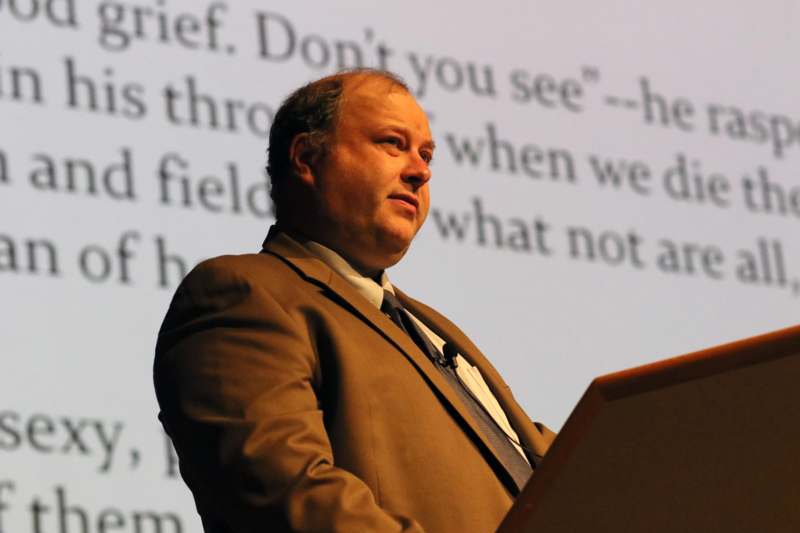
"A few years ago I worked with some students at Beta Theta Pi to build a bench for their fraternity in honor of Evan Hansen '19, who lost his life," he said. "I was able to find some lumber that had come from a 200-year-old tree felled right on campus. The wood was amazing. It was a holy experience to work it into its shape, to talk about Evan, the deceased, as we did so, and to dedicate it to his memory. Glorious wood. It was almost like Evan was sort of, kind of there, but not quite. Glory is like that. It has an almost-but-not-quiteness to it."

"Glory is necessarily material - bodied, even - but also there is concealment in the revelation," he said. “'Glory' might be thought of as on a spectrum with two poles, one ontological in reference, connoting weightiness, physicality, heft, and the other semiotic in reference, meaning 'to be valued or revered according to the substance of the gloried one.'”
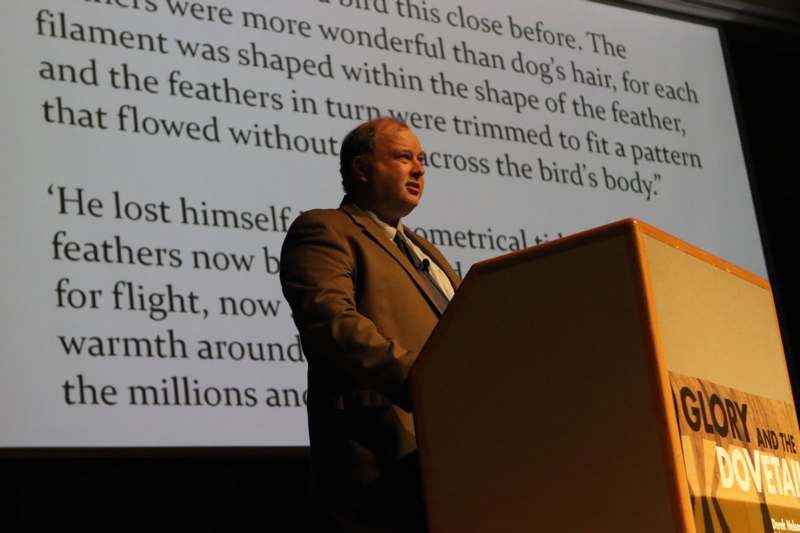
"I’ve been speaking mostly about the presence of God that contains echoes of an absence," he said. "We saw some visual examples of grave markers from the ancient world that lie behind some biblical texts. And physical objects like the tabernacle or a burning bush that display glory to Moses and us. Let’s shift just a bit to one other important pairing - the glory of a radiant face."
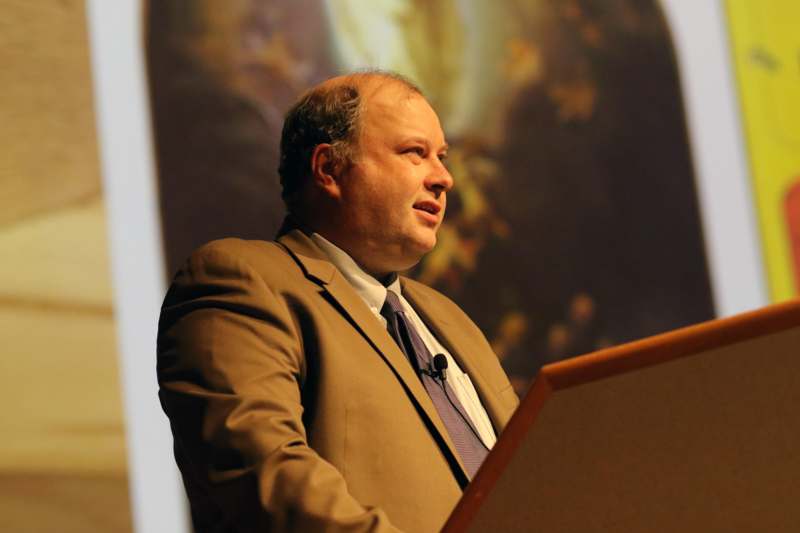
"Theology has a contested relationship with the humanities," he said. "William Placher’s LaFollette lecture, 'The Peasant’s Shoes and the Cross,' which I recommend wholeheartedly, was fully on this question of the method one follows in theology, and how that connects to but diverges from the liberal arts. He found the assignment so difficult he frequently described his panic at having been asked to do it. I have not focused so much on method because I wanted to keep our feet planted and our hands delighting in the feel of the wood."

"And so we have the dovetail as a joint with intersecting presence and absence," he concluded. "We have the dovetail as the glorious presence of God that includes within it an absence. And we have the dovetail as the consolation that buttresses grief, the solace that gives the strength to face loss. As the author of the fourth gospel says, much more could be written about these things, such that the world could not contain all the books it would require. I have necessarily skipped over a thousand subtleties I would like to explore."

